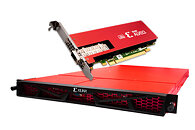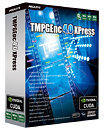
YouTube Updates Server Infrastructure With Custom ASICs for Video Transcoding
Video streaming is looking a bit like magic. The uploader sends a video to one platform in one resolution and encoding format, while the viewer requests a video in a specific resolution and encoding format used by the device the video is streamed on. YouTube knows this best, as it represents the world's largest video platform with over 2 billion users visiting the platform each month. That takes a massive load on the server infrastructure over at Google's data centers that host the service. There is about 500 hours worth of video content uploaded to the platform every minute, and regular hardware isn't being enough anymore to handle everything.
That is why YouTube has developed custom chips, ASICs, that are called VCUs or Video (trans)Coding Units. In Google data centers, there is a large problem with transcoding. Each video needs to adapt to the streaming platform and desired specifications, and doing that on regular hardware is a problem. By using ASIC devices, such as VCUs, Google can keep up with the demand and deliver the best possible quality. Codenamed Argos, the chip can deliver 20-33x improvement in efficiency compared to the regular server platform. In data centers, the VCU is implemented as a regular PCIe card, with two chips under the heatsinks.
That is why YouTube has developed custom chips, ASICs, that are called VCUs or Video (trans)Coding Units. In Google data centers, there is a large problem with transcoding. Each video needs to adapt to the streaming platform and desired specifications, and doing that on regular hardware is a problem. By using ASIC devices, such as VCUs, Google can keep up with the demand and deliver the best possible quality. Codenamed Argos, the chip can deliver 20-33x improvement in efficiency compared to the regular server platform. In data centers, the VCU is implemented as a regular PCIe card, with two chips under the heatsinks.






